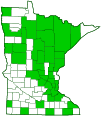Grisette
(Amanita vaginata)
Conservation • Description • Habitat • Ecology • Distribution • Taxonomy
|
|
||||||||||||||
Description |
Grisette is a common, medium-sized, gilled mushroom. It occurs in Europe, Japan, eastern Australia, North America, Mexico, and Central America. In the United States and southern Canada, it occurs east of the Great Plains and in the Pacific Northwest. It is relatively common in eastern Minnesota. It is found in the summer and fall, alone, scattered, or close together but not clustered (gregarious), in deciduous and mixed woodlands. It grows on the ground near trees. It has a mutually beneficial relationship (mycorrhizal) with the tiny rootlets of hardwood and coniferous trees, absorbing sugars and amino acids while helping the tree absorb water. The cap is oval, gray to grayish-brown, and sticky at first. As it ages it spreads out, becoming broadly convex. The mature cap is 1¼″ to 4″ (3 to 10 mm) in diameter and flat, often with a raised bump in the middle (umbonate). It is usually darker, often very dark, in the middle. The margins are prominently lined or grooved (striate), the grooves extending inward ⅜″ (1 cm) or more. The surface is dry but becomes slightly slimy when wet. There are sometimes a few scattered white to grayish patches, remnants of the universal veil, clinging to the cap. The stalk is 2¾″ to 6″ (7 to 15 cm) long, 3⁄16″ to ¾″ (5 to 20 mm) thick, and slightly tapered to the top. It is slender, fragile, white, and often covered with grayish or grayish-brown scales. There is no ring. The base is loosely enclosed in a cup-like sac (volva) that is the persistent remains of the universal veil. The volva is white and often develops grayish or rust-colored blemishes. The gills are closely spaced to nearly crowded and are narrowly attached to the stalk (adnate) or not attached (free). They are white or tinged with gray. There are secondary, short gills between the main gills. These are plentiful but unevenly distributed. The flesh is thin, white, and soft. It does not discolor when sliced. Unlike most Amanitas, it is edible. However, eating it is strongly discouraged due to its similarity to highly poisonous species. The spore print is white. |
Similar Species |
Tawny Grisette (Amanita fulva) cap is orangish-brown to tawny or tan. There are no short gills. |
Habitat and Hosts |
Woodlands. Hardwood and coniferous trees. |
Ecology |
Season |
Summer and fall |
Distribution |
||
|
Sources Biodiversity occurrence data published by: Minnesota Biodiversity Atlas (accessed through the Minnesota Biodiversity Atlas Portal, bellatlas.umn.edu, 7/26/2025). This map includes observations listed on iNaturalist,org on 8/3/2023, before they were removed (light green on the map). |
|
| 7/26/2025 | ||
Occurrence |
||
|
||
Taxonomy |
|
Kingdom |
Fungi (Fungi) |
Subkingdom |
Dikarya |
Phylum |
Basidiomycota (Basidiomycete Fungi) |
Subphylum |
Agaricomycotina (Higher Basidiomycetes) |
Class |
Agaricomycetes (Mushrooms, Bracket Fungi, Puffballs, and Allies) |
Subclass |
Agaricomycetidae |
Order |
|
Suborder |
Pluteineae |
Family |
Amanitaceae (Amanita mushrooms and allies) |
Tribe |
Amaniteae |
Genus |
Amanita (Amanita mushrooms) |
Subgenus |
Amanita |
Section |
Vaginatae |
|
|
Beginning 7/1/2024, iNaturalist.org stopped recognizing any fungi observations under the name Amanita vaginata. Observations under that name and several names are now placed under the Section Vaginatae of Subgenus Amanita of Genus Amanita. They are not assigned to any species. Section Vaginatae also contains many other fungi which do retain their species name, including the famliar Tawny Grisette (Amanita fulva). As a consequence, iNaturalist.org is no longer a source for the distribution of those now unnamed species.
iNaturalist may have acted precipitously, in essence deleting numerous observations of numerous observers before the concept became “fixed and typified.”. |
|
Subordinate Taxa |
|
Grisette (Amanita vaginata ssp. alba) Grisette (Amanita vaginata ssp. vaginata) |
|
Synonyms |
|
Agaricus albus Agaricus fungites Agaricus hyalinus Agaricus hyperboreus Agaricus plumbeus Agaricus plumbeus ssp. plumbeus Agaricus strangulatus Agaricus urceolatus Agaricus urceolatus var. spadiceus Agaricus vaginatus Agaricus vaginatus ssp. albida Agaricus vaginatus ssp. griseus Agaricus vaginatus var. albidus Agaricus vaginatus var. albus Agaricus vaginatus var. cinereus Agaricus vaginatus var. griseus Agaricus vaginatus var. lividus Agaricus vaginatus var. nivalis Amanita hyperborea Amanita livida Amanita livida subsp. Amanita livida var. fuscescens Amanita livida var. hyalina Amanita livida var. pallescens Amanita plumbea Amanita strangulata Amanita vaginata Amanita vaginata ssp. battarrae Amanita vaginata ssp. grisea Amanita vaginata ssp. livida Amanita vaginata ssp. lutescens Amanita vaginata ssp. plumbea Amanita vaginata ssp. urceolata Amanita vaginata ssp. violacea Amanita vaginata var. alba Amanita vaginata var. albida Amanita vaginata var. alutaceovergens Amanita vaginata var. argentata Amanita vaginata var. cinerea Amanita vaginata var. fungites Amanita vaginata var. fuscescens Amanita vaginata var. grisea Amanita vaginata var. hyalina Amanita vaginata var. hyperborea Amanita vaginata var. livida Amanita vaginata var. major Amanita vaginata var. pallescens Amanita vaginata var. plumbea Amanita vaginata var. roseilamellata Amanita vaginata var. spadicea Amanita vaginata var. strangulata Amanita vaginata var. violacea Amanita violacea Amanitopsis albida Amanitopsis hyperborea Amanitopsis plumbea Amanitopsis strangulata Amanitopsis urceolata Amanitopsis vaginata Amanitopsis vaginata ssp. battarrae Amanitopsis vaginata ssp. plumbea Amanitopsis vaginata ssp. violacea Amanitopsis vaginata var. alba Amanitopsis vaginata var. cinnabarina Amanitopsis vaginata var. crassivolvata Amanitopsis vaginata var. lutescens Amanitopsis vaginata var. olivaceoviridis Amanitopsis vaginata var. plumbea Amanitopsis vaginata var. tota-alba Amanitopsis vaginata var. violacea Collybia ventricosa var. alba Fungus phalloides Pseudofarinaceus hyperboreus Pseudofarinaceus strangulatus Pseudofarinaceus urceolatus Vaginata hyperborea Vaginata livida Vaginata strangulata |
|
Common Names |
|
Grisette Grisette Amanita |
|
Glossary
Mycorrhizal
A symbiotic, usually beneficial relationship between a fungus and the tiny rootlets of a plant, usually a tree.
Striate
Striped or grooved in parallel lines (striae).
Umbonate
On mushrooms, having a distinct, raised, knob-like projection in the center of the cap.
Universal veil
An egg-like structure that envelopes all or most of a developing gill mushroom. Remnants of the universal veil sometimes visible on a mature mushroom are patchy warts on the cap, a ring on the stalk, and a volva at the base of the stalk.
Volva
Also called cup. A cup-like covering at the base of a mushroom stem, sometimes buried. In Amanita, Volvariella, and some other mushrooms, it is the remnants of the universal veil ruptured by the mushroom pushing through. In Phallales it is the remnants of the ruptured peridium.
Visitor Photos |
||
Share your photo of this fungus. |
||
This button not working for you? |
||
Paul |
||
sprouted from the ground in a heavy wooded area. Dominantly burr oak and red oak. The specific area was a large pile of fallen trees, branches and brush that had been piled in the woods for years but was cleared earlier this summer to make way for a food plot which has been growing for better than a month. All of them are growing individually. First sighting was yesterday 8/1. As of today 8/2 all of the domes have flattened and it appears that the deer have eaten several as well. In all there was between 8-12 that I could find. Today I also found a few more that are just starting to pop out of the ground. |
||
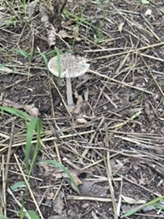 |
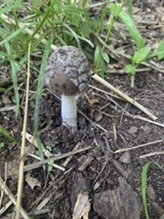 |
|
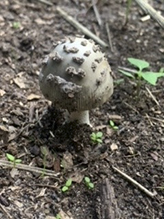 |
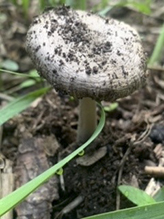 |
|
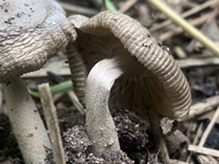 |
||
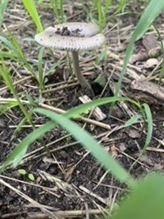 |
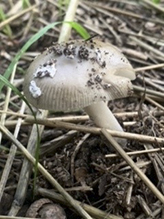 |
|
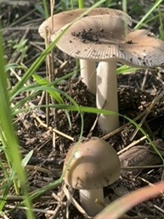 |
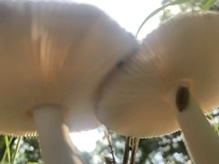 |
|
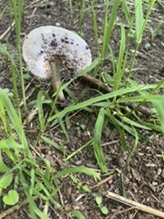 |
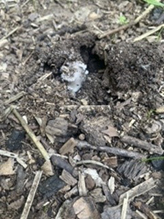 |
|
… I was only able to find a small handful of them today. It appears that most have been eaten by animals as I found several that were bitten off half way down the stem and the top of the stem with cap laying beside it. In any event, I did find a good example and I removed it from the ground by accident while lightly trying to brush away the soil around the base. … |
||
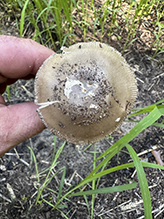 |
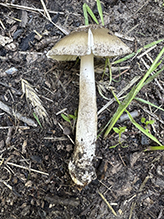 |
|
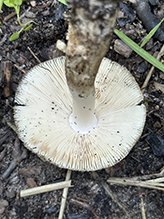 |
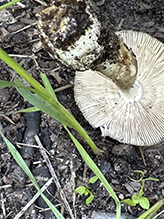 |
|
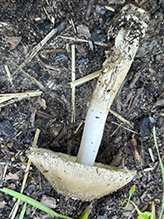 |
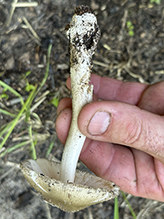 |
|
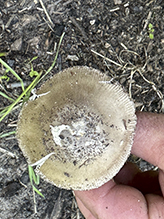 |
||
This is a sample of what I am finding today. Some is new growth and some have clearly been chomped on. … |
||
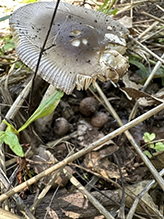 |
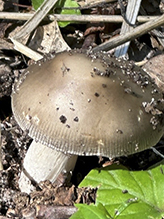 |
|
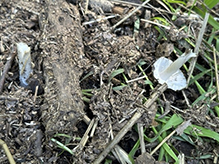 |
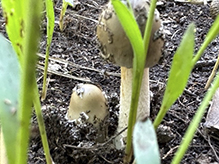 |
|
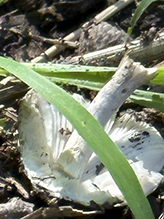 |
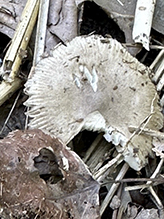 |
|
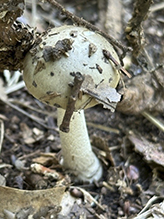 |
||
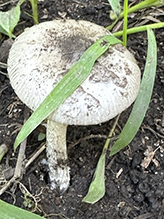 |
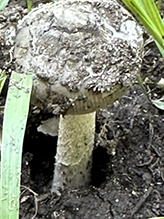 |
|
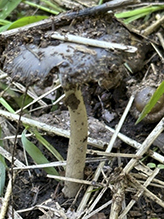 |
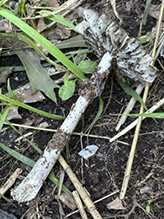 |
|
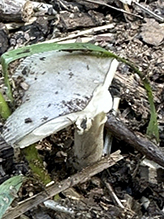 |
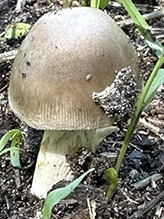 |
|
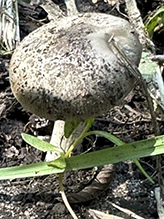 |
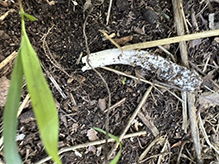 |
|
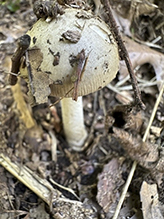 |
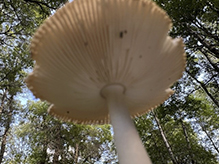 |
|
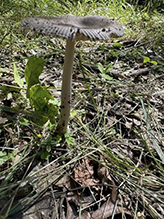 |
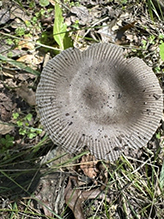 |
|
Margot Avey |
||
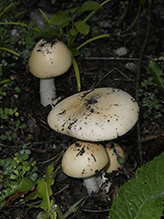 |
||
They are beautiful in their own way! |
||
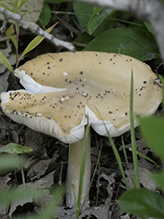 |
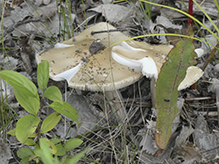 |
|
MinnesotaSeasons.com Photos |
||

Slideshows |
|

Visitor Videos |
||
Share your video of this fungus. |
||
This button not working for you? |
||
|
Other Videos |
||
What's That Fungus? - Amanita vaginata |
About
Oct 23, 2020 |
How to identify Amanita Vaginata (Grisette) mushroom? |
About
Jun 7, 2020 Amanita vaginata, commonly known as the Grisette, is an edible mushroom in the fungus family Amanitaceae. The genus Amanita contains many deadly species. Amanita Vaginta has also some similiarites to these deadly species. I wanted to talk about a few imporant points to identify Amaniga vaginata. Have fun. Attention! - Please do not consume the mushrooms you have collected or purchased according to the comments and images here, get the opinion from a qualified person or search from reliable sources to be 100% sure. |
Amanita vaginata |
About
Sep 26, 2016 The details of this mushroom |

Visitor Sightings |
||
Report a sighting of this fungus. |
||
This button not working for you? |
||
| Paul 8/3/2023 |
Location: St. Cloud, MN (Benton County) … I was only able to find a small handful of them today. It appears that most have been eaten by animals as I found several that were bitten off half way down the stem and the top of the stem with cap laying beside it. In any event, I did find a good example and I removed it from the ground by accident while lightly trying to brush away the soil around the base. … |
| Paul 8/2/2023 |
Location: St. Cloud, MN (Benton County) sprouted from the ground in a heavy wooded area. Dominantly burr oak and red oak. The specific area was a large pile of fallen trees, branches and brush that had been piled in the woods for years but was cleared earlier this summer to make way for a food plot which has been growing for better than a month. All of them are growing individually. First sighting was yesterday 8/1. As of today 8/2 all of the domes have flattened and it appears that the deer have eaten several as well. In all there was between 8-12 that I could find. Today I also found a few more that are just starting to pop out of the ground. |
| Margot Avey 8/24/2022 |
Location: Westwood Nature Center, St Louis Park MN They are beautiful in their own way! |
| Margot Avey 8/20/2022 |
Location: Westwood Nature Center, St Louis Park MN |
MinnesotaSeasons.com Sightings |
||
|

Created: 8/31/2022 Last Updated: © MinnesotaSeasons.com. All rights reserved. |
